This article may be expanded with text translated from the corresponding article in German. (December 2021)Click [show] for important translation instructions.
|

Christa Sammler (born 23 December 1932) is a German sculptor. [1] [2]
This article may be expanded with text translated from the corresponding article in German. (December 2021)Click [show] for important translation instructions.
|

Christa Sammler (born 23 December 1932) is a German sculptor. [1] [2]

Christa Sammler was born in Breslau (as Wrocław was known at that time). Between 1948 and 1951 she received drawing lessons from Alfred Herzog in Bautzen. [3] 1951 was the year in which she passed her school final exam ("Abitur") which opened the way for a university-level education. She studied between 1951 and 1956 at the Dresden Academy of Fine Arts where she was taught by Walter Arnold. [4] However, it was probably more important in defining her own approach that between 1956 and 1958 she was a "Master student" ("Meisterschülerin") with Gustav Seitz at the East German Academy of Arts. [4] She has worked in Berlin as a freelance artist since 1958. [5]
Alongside her work as a professional sculptor Sammler has made it a priority to focus on rescuing and preserving historical art works and buildings. [4] Projects that have benefitted from her interventions over the years have included the mews in Potsdam's Dutch Quarter and old building facades at the Neues Museum in Berlin.
As a member of the governing executive of the Berlin Historical [Buildings] Society, in 2001 she successfully petitioned Walter Momper, Berlin's former mayor who by this time was president of the Berlin Chamber of Deputies, to ensure an "appropriate" location for the memorial to the reformer Baron vom Stein, in front of the Berlin City Parliament. [1]
It was reported in 2014 that Christa Sammler had transferred her entire artistic estate to the Winckelmann Museum in Stendal (an hour or so[ clarification needed ] to the west of Berlin). [2]

Christa Wolf was a German novelist and essayist. She was one of the best-known writers to emerge from the former East Germany.
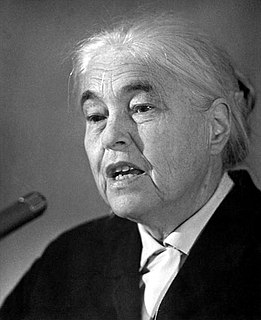
Anna Seghers, is the pseudonym of a German writer notable for exploring and depicting the moral experience of the Second World War. Born into a Jewish family and married to a Hungarian Communist, Seghers escaped Nazi-controlled territory through wartime France. She was granted a visa and gained ship's passage to Mexico, where she lived in Mexico City (1941–47).

Johannes Robert Becher was a German politician, novelist, and poet. He was affiliated with the Communist Party of Germany (KPD) before World War II. At one time, he was part of the literary avant-garde, writing in an expressionist style.
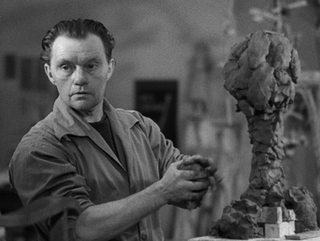
Fritz Cremer was a German sculptor. Cremer was considered a key figure in the DDR art and cultural politics. His most notable for being the creator of the "Revolt of the Prisoners" memorial sculptor at the former concentration camp of Buchenwald.
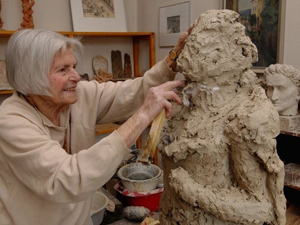
Ingeborg Hunzinger was a German sculptor.
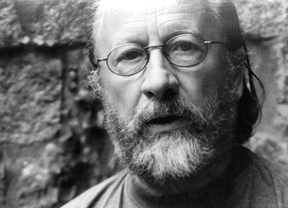
Georg Katzer was a German composer and teacher. The last master student of Hanns Eisler, he composed music in many genres, including works for the stage. Katzer was one of the pioneers of electronic new music in the German Democratic Republic and the founder of the first electronic-music studio in the GDR. He held leading positions in music organisations, first in the East, then in the united Germany, and received many awards, including the Art Prize of the German Democratic Republic, the National Prize of the German Democratic Republic, the Order of Merit of the Federal Republic of Germany, and the German Music Authors' Prize.

The Will Lammert Prize was an East German art award named after the sculptor Will Lammert. Between 1962 and 1992, it was awarded at irregular intervals to young sculptors by the (East) German Academy of Arts. There were 13 laureates in total.

Karl Albiker was a German sculptor, lithographer and teacher of fine arts. Albiker studied with Auguste Rodin in Paris. From 1919 to 1945 he was a professor at the Dresden Academy of Fine Arts. His monumental statues, like those of Georg Kolbe, reflected National Socialist heroic realism. Albiker created the relay racers for Berlin's Reich Sports Field and various war monuments, including those in Karlsruhe, Freiburg im Breisgau, and Greiz.

Elizabeth Shaw was an Irish artist, illustrator and children's book author, active in Germany.
Christa Reinig was a German poet, fiction and non-fiction writer, and dramatist. She began her career in the Soviet occupation zone which became East Berlin, was banned there, after publishing in West Germany, and moved to the West in 1964, settling in Munich. She was openly lesbian. Her works are marked by black humor, and irony.

Aleida Assmann is a German professor of English and Literary Studies, who studied Egyptology and whose work has focused on cultural anthropology and Cultural and Communicative Memory.
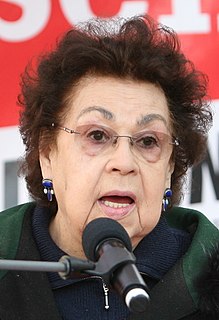
Gisela Steineckert is a German writer known for her books and song lyrics. She has also written numerous radio plays and several film scripts. In terms of published output she was particularly prolific before 1989, but her professional career has nevertheless outlasted the German Democratic Republic.
Toni Mau was a German painter, graphic artist and arts academy teacher.

Ruthild Hahne was a German sculptor. Her most productive phase coincided with the early years of the German Democratic Republic.

Christa Luft is a German economist and politician of the SED/PDS. Luft joined the SED in 1958. From 18 November 1989 to 18 March 1990 she was economy minister in the Modrow government. From 1994 to 2002 she was member of the Bundestag for the PDS.
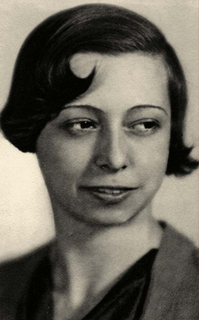
Oda Schottmüller was an expressive dancer, mask maker and sculptor. Schottmüller was most notable as a resistance fighter against the Nazis, through her association with a Berlin-based anti-fascist resistance group that she met through the sculptor Kurt Schumacher. The group would later be named by the Gestapo as Die Rote Kapelle.

Elfriede Paul was a German physician and resistance fighter against the Nazi regime. Paul, a small and energetic woman, was a communist member of the anti-fascist resistance group that was later called the Red Orchestra by the Abwehr. Paul was one of the few members of the Red Orchestra Group to survive imprisonment at the hands of the Gestapo. After the war, she was responsible for drafting health policies for the German Democratic Republic.

Ursula Sax is a German visual artist and sculptor.

Anne Lequy is Rector of Magdeburg-Stendal University of Applied Sciences and a Professor for Specialised Communication – French there.
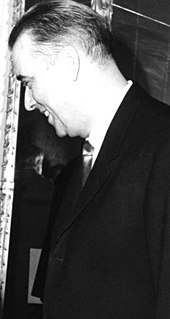
Walter Rossow was a leading German Landscape architect and, during his later years, a university professor. After 1945, together with leading architects of the time such as Egon Eiermann and Paul Baumgarten, Walter Rossow played a key role in reconstructing Berlin.